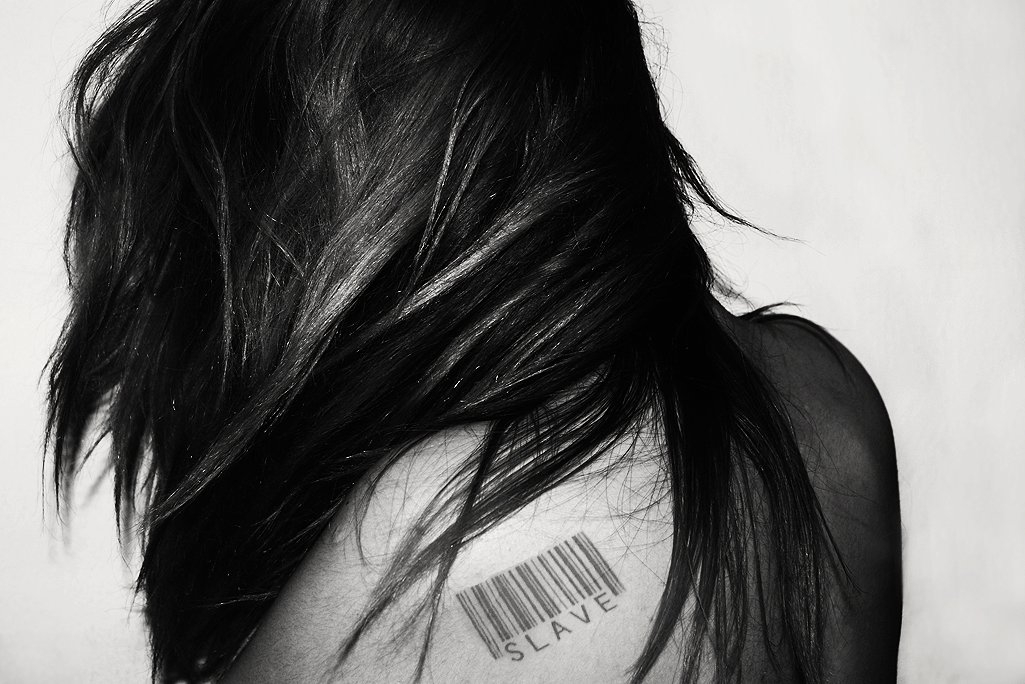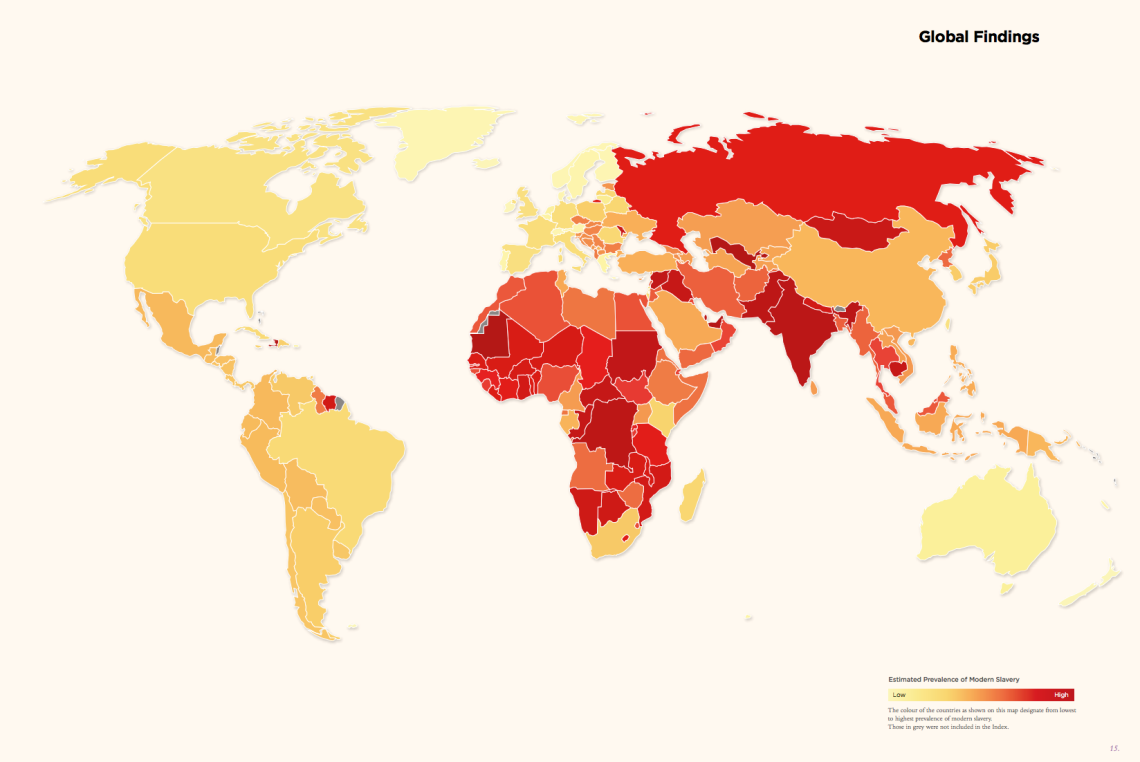
21 Facts And Stories Of Modern Slavery That You Won’t Believe (And That Are Still Going On)
"If one of the victims lost their job for some reason, members of the organization would beat them. When some of the victims worked side jobs to try to make their own money they were beaten unconscious, awakened, then beaten unconscious again."
By ![]() Daniel Hayes
Daniel Hayes

On May 5th, 2015, I conducted an interview with Benjamin Skinner, modern day slavery expert and author of ‘A Crime So Monstrous‘. Where a source is not provided, Mr. Skinner’s expertise is the source. The full interview is provided at the bottom of the piece. Below are 21 facts and stories of modern slavery, an industry you won’t believe has made an incredible comeback.
1. The working definition of a slave is someone who is forced to work and is held under threat of violence for no pay beyond subsistence. They are people who cannot walk away from their work.
2. The term “human trafficking” which is a term most people have heard is actually just a modern term for slavery. Human trafficking does not refer to illegal immigrants being smuggled across borders who are then free to go their own way. [Source]
3. The U.S. State Department and social scientists estimate that there are as many as 47 million slaves in the world today. [Source]
4. By contrast, there were a little under 4 million slaves in the U.S. in 1860. [Source]
5. The number of slaves currently in bondage today is greater than in all of recorded human history combined.
6. Slaves are cheaper today than they have ever been. In 1860 Texas a slave cost up to $19,000 in 2015 money. Today a slave can be gotten in some places for as little as $90 in 2015 money. This makes modern slaves more disposable to slaveholders than even under the horrific conception of slavery in the U.S. most Americans have. [Source 1, 2]
7. 65.8% of the slaves in the entire world live the Asia Pacific region. Y’know, where we get all our clothes (textile slavery is actually less common than most think). [Source]
8. Up to 4% of the population of Mauritania in West Africa consists of slaves. They have the highest percentage of slaves in the entire world with a total of 155,600 slaves. [Source]
9. Here’s what a map of global slavery looks like. [Source]

10. Iceland and Ireland have the lowest incidents of slavery in the world. [Source]
11. In the United States, slavery often takes the form of sexual slavery, specifically sexual slavery of children and minors.
In 2009, Shelby Lewis pled guilty to four counts of sex trafficking for prostituting four female juveniles when he drove them from Temple Hills, Maryland to Washington, D.C. for the express purpose of “having them engage in sex for money.” He had prostituted these same four girls during different intervals between 2006 and 2009. The girls were 12, 13, 14, and 16 years old.
The 12-year-old girl testified that she came to live with Lewis after running away from her custodial aunt and finding herself homeless. She lived alongside Lewis’s children and with a stripper and prostitute who also lived there. Lewis raped her the second day he knew her and began pimping her less than a year later which continued for a total of 914 days. Any money she earned in this way went to Lewis.
Shelby essentially repeated this process with the 13, 14, and 16-year-old girls. Each were required to have sex with more than five men a night. Operating in this manner meant that Lewis could make over $2500 a week from child prostitution. [Source, additionally court documents were provided by attorney Martina Vandenberg]
12. The United States ranks 145 out of 167 on the Global Slavery Index with 167 being the least amount of slavery. [Source]
13. However, the United States does import goods made from materials derived from slave labor. For example, over 1 million Uzbeks are forced by the government to harvest cotton two months out of every year. This cotton is then sold into the global market where it ends up in products Westerners, including Americans, buy. [Source]
14. The African Journal of Criminology and Justice Studies describes the difference between old slavery (think the antebellum South) with new slavery in the 21st century as follows. [Source]

15. The vast majority of slaves are held in collateralized hereditary debt bondage which means that a son or daughter can be born into slavery because their parents owed a debt and slavery is the payment. There is no end to this debt. It spans generations with no end in site. Benjamin Skinner wrote about this phenomenon which he personally observed in northern India.
16. One billion people worldwide live on on less than a dollar a day. Subsistence living makes people very vulnerable to making compromises that could result in enslavement. Some poor families have been known to give their children away to individuals posing as “placement agents” who claim the children they take will be given a better life. Instead, these children often become slaves without the parents ever knowing what became of them.
17. In another case from 2013, an organization known as the Botsvynyuk Organization recruited poor Ukrainians claiming that it would provide them passage to the United States whereafter they provide the organization with three years of work and then be free to go their own way. This is an arrangement known as indentured servitude and was common in people coming to the United States during the 18th century.
However, the organization reneged on their arrangement and the Ukrainian victims found themselves in Mexico where a contact would confiscate their passports and immigration papers and command them to illegally cross the border into the U.S. Once they’d crossed over they were put to work by another contact and their wages were confiscated under threat of violence.
If one of the victims lost their job for some reason, members of the organization would beat them. When some of the victims worked side jobs to try to make their own money they were beaten unconscious, awakened, then beaten unconscious again. Women were beaten and raped.
The members of the organization were only found out because the FBI began to notice a number of suspicious Western Union money transfers which led to a wholesale investigation. [Source]
18. Many of the minerals used in modern electronics like gold, tin, and tungsten are mined in war torn areas like the inappropriately named Democratic Republic of the Congo. The Congo is home to 762,900 slaves and is seventh in the world in slave prevalence, two steps behind India and Pakistan. [Source]
19. In 2013, the Mauritanian government (remember, number 1 nation in the world in terms of slavery) formed a tribunal to to try and prosecute those who engaged in, as they called it, the “vestiges” of slavery. Since then it has prosecuted no one. Well, no one that is except anti-slavery activists in Mauritania trying to pressure the nation into cracking down on slavery.
The “vestiges” are pretty powerful it turns out. Even worse, enslaved women who are raped by their slave masters are then charged with “unlawful sexual conduct.” [Source 1, 2, 3]
20. Slavery as an industry is extremely profitable. The International Labor Organization estimates that slavery is responsible for $150 billion (with a B) in profits for slaveholders annually. [Source]
21. Slavery is present in nearly every industry on the planet from agriculture to textiles, cocoa workers (used to make chocolate) to mining. It’s everywhere, and while this doesn’t mean every product from these industries is produced by slaves, they certainly aren’t, goods produced by slave labor are a part of the mainstream global economy, not an outlier or an exception you never come across. [Source]
22. Global slavery is growing, not shrinking.
If you’d like to hear more on this topic and what’s being done about it in a more conversational way, check out my interview with Benjamin Skinner below. ![]()
[soundcloud url=”https://api.soundcloud.com/tracks/210940969″ params=”auto_play=false&hide_related=false&show_comments=true&show_user=true&show_reposts=false&visual=true” width=”100%” height=”450″ iframe=”true” /]








